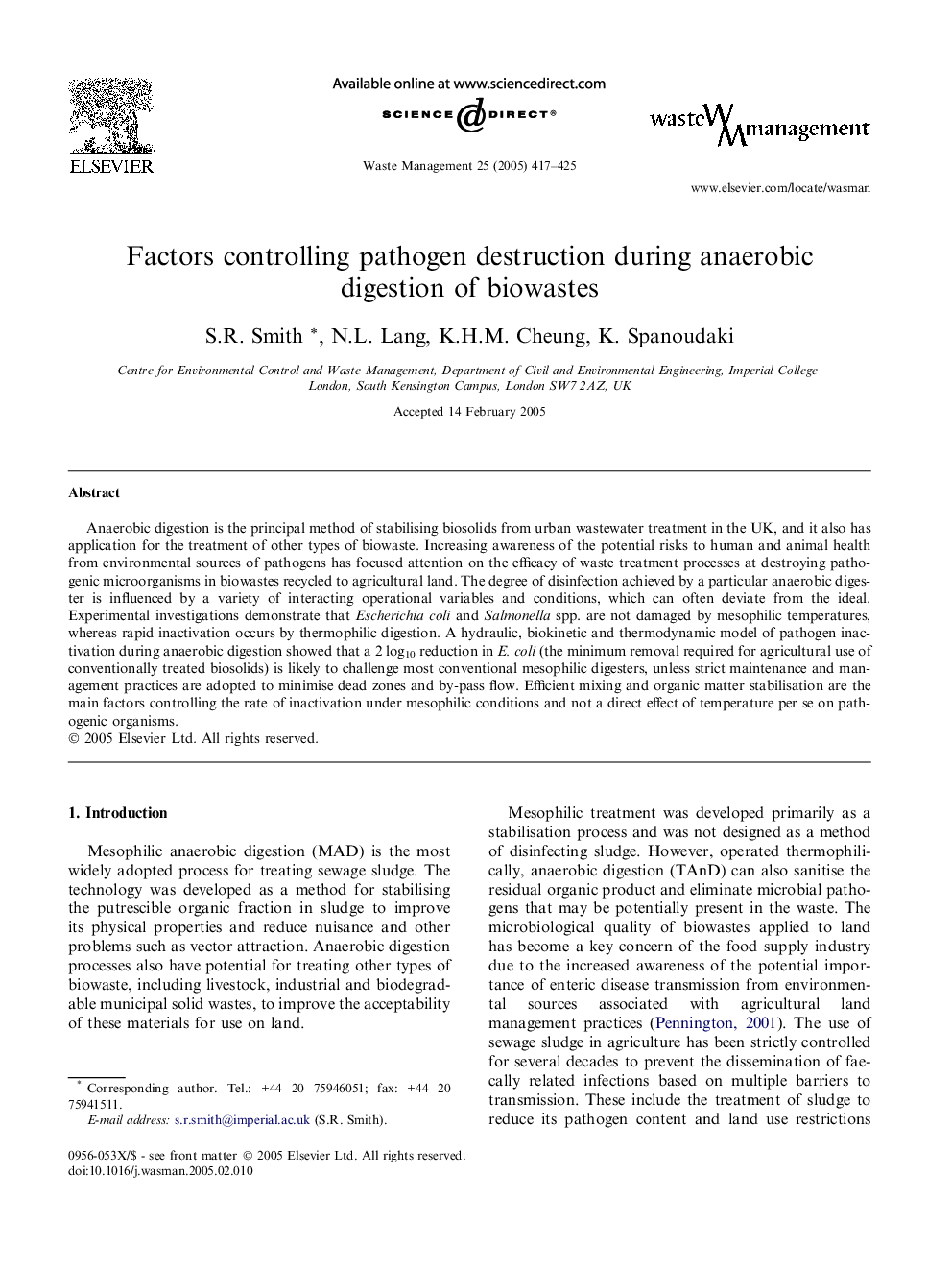| کد مقاله | کد نشریه | سال انتشار | مقاله انگلیسی | نسخه تمام متن |
|---|---|---|---|---|
| 9465482 | 1315158 | 2005 | 9 صفحه PDF | دانلود رایگان |
عنوان انگلیسی مقاله ISI
Factors controlling pathogen destruction during anaerobic digestion of biowastes
دانلود مقاله + سفارش ترجمه
دانلود مقاله ISI انگلیسی
رایگان برای ایرانیان
موضوعات مرتبط
مهندسی و علوم پایه
علوم زمین و سیارات
مهندسی ژئوتکنیک و زمین شناسی مهندسی
پیش نمایش صفحه اول مقاله

چکیده انگلیسی
Anaerobic digestion is the principal method of stabilising biosolids from urban wastewater treatment in the UK, and it also has application for the treatment of other types of biowaste. Increasing awareness of the potential risks to human and animal health from environmental sources of pathogens has focused attention on the efficacy of waste treatment processes at destroying pathogenic microorganisms in biowastes recycled to agricultural land. The degree of disinfection achieved by a particular anaerobic digester is influenced by a variety of interacting operational variables and conditions, which can often deviate from the ideal. Experimental investigations demonstrate that Escherichia coli and Salmonella spp. are not damaged by mesophilic temperatures, whereas rapid inactivation occurs by thermophilic digestion. A hydraulic, biokinetic and thermodynamic model of pathogen inactivation during anaerobic digestion showed that a 2Â log10 reduction in E. coli (the minimum removal required for agricultural use of conventionally treated biosolids) is likely to challenge most conventional mesophilic digesters, unless strict maintenance and management practices are adopted to minimise dead zones and by-pass flow. Efficient mixing and organic matter stabilisation are the main factors controlling the rate of inactivation under mesophilic conditions and not a direct effect of temperature per se on pathogenic organisms.
ناشر
Database: Elsevier - ScienceDirect (ساینس دایرکت)
Journal: Waste Management - Volume 25, Issue 4, 2005, Pages 417-425
Journal: Waste Management - Volume 25, Issue 4, 2005, Pages 417-425
نویسندگان
S.R. Smith, N.L. Lang, K.H.M. Cheung, K. Spanoudaki,